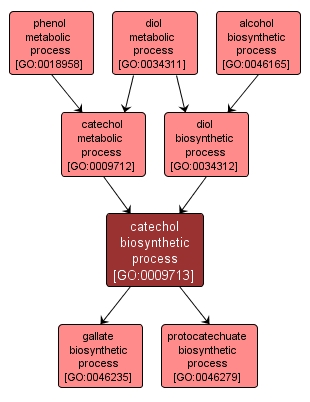GO TERM SUMMARY
|
| Name: |
catechol biosynthetic process |
| Acc: |
GO:0009713 |
| Aspect: |
Biological Process |
| Desc: |
The chemical reactions and pathways resulting in the formation of catechol, a compound containing a pyrocatechol nucleus or substituent. |
Synonyms:
- catechol synthesis
- catechol biosynthesis
- catechol formation
- catechol anabolism
|
|

|
INTERACTIVE GO GRAPH
|














